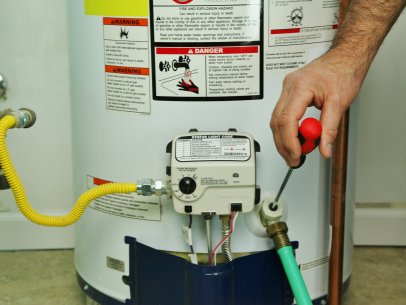Nearly everybody may have their own individual perception when it comes to What Kind of Maintenance Do Water Heaters Need?.

Hot water is necessary for daily comfort, whether it's for a rejuvenating shower or washing meals. To guarantee your warm water system runs efficiently and lasts much longer, routine upkeep is essential. This write-up offers sensible suggestions and understandings on how to keep your home's warm water system to avoid interruptions and expensive fixings.
Introduction
Maintaining your home's hot water system may appear daunting, yet with a few basic actions, you can guarantee it operates efficiently for several years to come. This overview covers every little thing from understanding your warm water system to do it yourself upkeep tips and understanding when to call professional help.
Value of Maintaining Your Warm Water System
Regular maintenance not only prolongs the life-span of your warm water system yet also ensures it operates efficiently. Neglecting maintenance can result in reduced effectiveness, higher energy bills, and even premature failure of the system.
Signs Your Hot Water System Needs Maintenance
Knowing when your hot water system needs attention can avoid major issues. Look out for signs such as inconsistent water temperature, strange noises from the heating unit, or rustic water.
Purging the Hot Water Heater
Purging your water heater removes sediment accumulation, enhancing performance and lengthening its life.
Monitoring and Changing Anode Rods
Anode poles protect against deterioration inside the tank. Evaluating and changing them when broken is crucial.
Complex Issues Requiring Professional Help
Examples include major leaks, electrical problems, or if your water heater is consistently underperforming.
Routine Professional Maintenance Benefits
Professional upkeep can consist of thorough inspections, tune-ups, and ensuring compliance with safety criteria.
Checking and Adjusting Temperature Settings
Readjusting the temperature level setups makes sure optimal performance and safety and security.
Do It Yourself Tips for Upkeep
You can do a number of maintenance tasks on your own to maintain your hot water system in top condition.
Looking for Leaks
Frequently inspect pipelines and links for leaks, as these can result in water damage and greater expenses.
Comprehending Your Warm Water System
Before diving into maintenance tasks, it's useful to recognize the fundamental components of your warm water system. Typically, this consists of the water heater itself, pipelines, anode rods, and temperature controls.
Month-to-month Upkeep Tasks
Regular monthly checks can aid catch minor concerns before they escalate.
Checking Pressure Relief Valves
Checking the pressure safety valve guarantees it functions appropriately and stops too much stress build-up.
Protecting Pipes
Shielding hot water pipelines decreases warmth loss and can save power.
When to Call an Expert
While do it yourself maintenance is advantageous, some problems require specialist competence.
Conclusion
Normal maintenance of your home's warm water system is important for performance, durability, and price savings. By adhering to these suggestions and knowing when to seek specialist help, you can ensure a reputable supply of warm water without unexpected disturbances.
How to Maintain an Instant Hot Water Heater
Before tinkering with your hot water heater, make sure that it’s not powered on. You also have to turn off the main circuit breaker and shut off the main gas line to prevent accidents. Also turn off the water valves connected to your unit to prevent water from flowing into and out of the appliance. 2. When you’re done, you have to detach the purge valves’ caps. These look like the letter “T” and are situated on either side of the water valves. Doing so will release any pressure that has accumulated inside the valves while at the same time avoid hot water from shooting out and burning your skin. 3. When the purge valves’ caps are removed, you have to connect your hosing lines to the valves. Your unit should have come with three hoses but if it didn’t, you can purchase these things from any hardware or home repair shops. You can also get them from retail stores that sell water heating systems. Read the user’s manual and follow it to complete this task properly. When the hosing lines are connected, open the purge port’s valves. 4. You should never use harsh chemical cleaners or solutions when cleaning your unit. Make use of white vinegar instead. It should be undiluted and you’ll probably use about 2 gallons. 5. Now flush your water heater. This task should probably take about 40 minutes. We can’t give you specific directions for this because the procedure is carried out depending on the type, model and brand of your heater. With that being said, refer to the user’s manual. 6. When you’re done draining the unit, you have to turn off the purge port valves again. Remove the hosing lines that you earlier installed on each of the water valves. Put the valve caps (purge port) back in their respective places and be very careful so as not to damage the rubber discs that are found inside these caps. 7. Now that everything’s back in place, check your user’s manual again to find out how to reactivate your water heating system. 8. Once it is working, turn one of your hot water faucets on just to let air pass through the heater’s water supply pipes. Leave the tap on until water flows smoothly out of it. https://www.orrplumbing.com/blog/2014/september/how-to-maintain-an-instant-hot-water-heater/

I'm just very intrigued by What Kind of Maintenance Do Water Heaters Need? and I'm hoping you enjoyed the post. Sharing is good. Helping others is fun. Thanks a lot for your time. Return soon.
Learn More